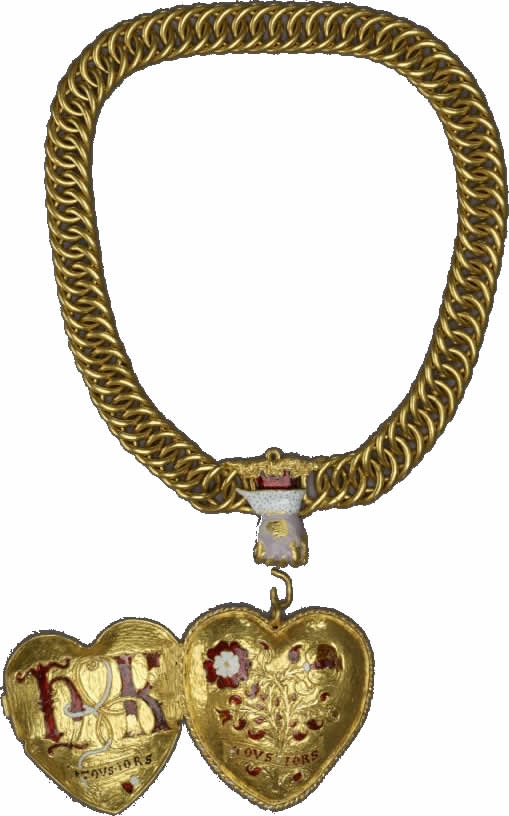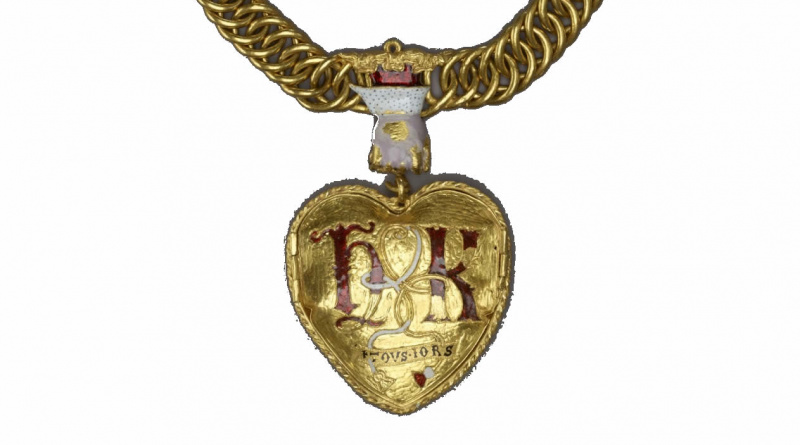Henry VIII pendant is star of Treasure annual report
This week at the British Museum, Arts Minister Lord Parkinson of Whitley Bay, launched the Treasure Annual Report for 2020 and the Portable Antiquities Scheme (PAS) Annual Report for 2021. The report says that 45,581 finds were recorded of which 1,085 were Treasure. 96% of these were found by detectorists. The report says this highlights “the massive contribution that members of the public are making to archaeological knowledge“.
Hartwig Fischer, Director of the British Museum, said: “It is fantastic that in 2021 so many finds have been recorded and that many of the most important have been acquired by museums for public benefit, so they can be seen and enjoyed by people across the whole of the country.”
Arts & Heritage Minister, Lord Parkinson of Whitley Bay, said: “It is wonderful to see archaeology and metal-detecting across the country thriving – helping to uncover treasures which deepen our understanding of our shared national history. Supported by the success of the Treasure Act, it means that hundreds of wonderful discoveries are now in museums across the UK where they can be enjoyed by everyone.”
Henry VIII gold pendant on chain
One of the treasure finds featured at the launch was a gold pendant on chain linked by its imagery to Henry VIII and his first wife Katherine of Aragon. It is recorded at the PAS as WMID-A51F34 and designated a Find of Note of National Importance.

The pendant weighs 300 grams and features the symbols of Henry VIII and his first wife Katherine of Aragon, on a chain composed of 75 links, attached by an enamelled suspension link in the form of a hand
One side is decorated with a Tudor rose entwined with a pomegranate bush growing from the same branch. The reverse shows the letters H and K linked together. The banner at the bottom reads: + TOVS + IORS, a pun on the French word “toujours” – always.
Jousting prize
Although it is not possible to be certain, one theory is that the pendant was a prize at a tournament or joust. This is because some elements are somewhat roughly made which is at odds with the purity of the gold. It is suggested that this is because it was intended to create a spectacle when viewed from some distance but could be melted down after the event.
The PAS record provides some support for this: ” It is recorded in a missive of July 1517 following a joust and banquet for the Flemish ambassadors at Greenwich that the event had been four months in preparation, producing metalwork with the letters H & K and other royal emblems for the garments of over one hundred individuals and many horses. This suggests a huge amount of metalwork being hastily prepared with visual impact in mind, none of which was intended to have longevity”
Finding the pendant
Detectorist Charlie Clarke found the pendant on 13 December 2019 in a field in North Warwickshire. He had only been metal detecting for six months and admitted to shrieking “like a little schoolgirl” when he made the discovery, adding: “My voice went pretty high-pitched. It was just outstanding. Nobody thinks you’re ever going to pull out that, in my lifetime especially — I can imagine in 30 lifetimes“.
Charlie hopes to use the money for his 4-year-old son’s education “People say it’s like winning the lottery but people win the lottery, people don’t find the crown jewels, do they?”

